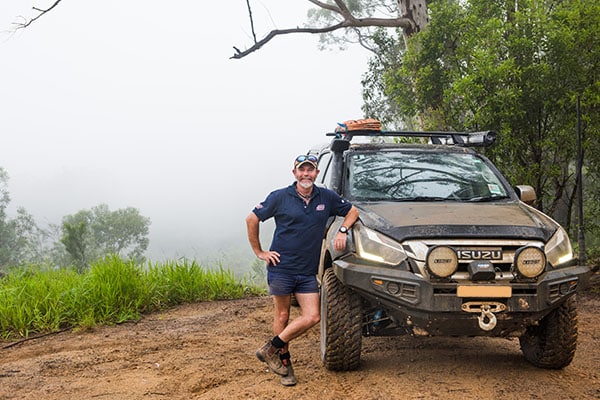According to car insurer Allianz, thousands of animals die on Australian roads every year, hit by vehicles, the majority being wallabies and kangaroos. Indeed, the likelihood that you will come across some on the country roads of Australia is pretty high, especially early morning, at sunset or at night. Like many animals, they will freeze when caught in headlights and won’t save themselves.
When you think that the average weight of a female kangaroo is 18 to 40kg and that of a male 55 to 90Kg, you do NOT want that hitting your car. It will, of course, cause considerable physical damage to your car, but, worse, the force of the collision can actually make you lose control of your vehicle and kill people.
If you hit a kangaroo, here is what you should do:
- Find a safe place to stop.
- Approach the animal with caution. Kangaroos (and emus for that matter) have very strong legs and, if they are hurt but still alive, they will feel all the more threatened and could still seriously hurt you.
- If the kangaroo is alive, don’t attempt to move it or help it. Call the nearest ranger station or visitor information point – you can Google them – who will take it from there. Likewise, if you find a kangaroo stuck in a fence. Again, they are powerful animals and you could get seriously hurt. Besides, the kangaroo might also struggle to get free to get away from you and hurt itself even more, and if you manage to free it, it will promptly hop away and won’t receive the care it is likely to need.
- If you are certain that it is dead, try to pull it to the side of the road so that it doesn’t cause accidents after you have left, and again, notify the ranger station.
- If you have hit a kangaroo or another type or marsupials and it is dead, check its pouch to see if it is carrying a young
Keep the baby in a warm and quiet place and handle it as little as possible. Don’t feed him any fluid or food. Either call the nearest rescue centre or take it there. Orphan joeys are, unfortunately, a common occurrence and teams there have everything it will need.
Then, all it is left for you to do is look after your car! If you hit the kangaroo full on, it is likely that it will have suffered significant damage and that it may not be drivable. Most insurances will cover this type of collision as long as you have comprehensive cover. If you are going to Australia for a holiday, make sure that you check with your insurer before setting out and increase your coverage as necessary. Having said that, although kangaroos are a bit thick and will launch themselves at cars, we are the dominant species so we ought to know better and try to avoid them in the first place! First of all, there is this big giveaway, a bright yellow sign with pictures of animals that you should definitely heed!
Kangaroos, wombats, wallabies and emus tend to be more active at dawn and dusk so pay special attention at these times of the day and reduce your speed. Not only will it give you more time to react if an animal suddenly appears in front of you, but it will also reduce the impact and damage to your car.
Kangaroos and wallabies have a habit of sitting in the grass by the side of the road then jump out in front of cars all of a sudden. So if you have passengers, ask them to keep an eye out for them.
If you see an animal by the side of the road when you have your lights on, change them to low beam as high beams confuse them and they freeze on the spot rather than avoid you. You can try to honk as the noise may scare the animal off but you should only try this if there is no other vehicle around, especially oncoming traffic.
Remember that most animals travel in groups so if you see one, it is likely that there are more nearby and you should stay alert.
The absence of a sign about animals doesn’t mean that there aren’t any, and don’t assume that you will only encounter them in the outback. Roos have been known to strike vehicles in cities too.








